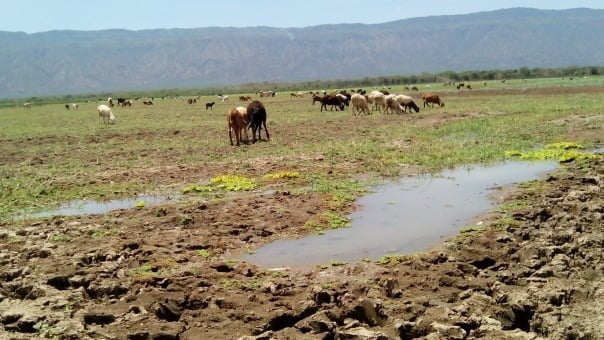The Dwindling of Kenya’s Only Ox-Bow Lake, Lake Kamnarok

Under the clear blue skies and in the heart of the magical Kerio Valley sits the only ox-bow lake in Kenya, Lake Kamnarok. The freshwater lake is housed by the breathtaking Lake Kamnarok National Reserve situated in Baringo County, Rift Valley region.
The reserve is endowed with an impressively diverse landscape and sensational mountains. It is home to buffalos, warthogs, waterbucks, Rothschild’s giraffes, rare white crocodiles, bush pigs, and over 500 elephants. There is prolific birdlife featuring a variety of resident and migratory birds. The 1 sq. Km reserve was created in June 1983 and later gazetted in the following year.
Add a header to begin generating the table of contents
History of Lake Kamnarok
Kamnarok originates from the word ” narok, ” a species of a water plant found during the early stages of the lakes’ formation. The lake has the second-highest concentration of crocodiles after Lake Chad and hence its name “The Place of a Thousand and One Crocodiles”. However, a visit to the now dwindling lake will confirm your worst fears as the only scenery left to see are the remains of dead crocodiles scattered across the shoreline and large beds of rooted weeds covering the now fragile beauty. Evidently, Lake Kamnarok is rapidly vanishing!
In the 18th century, Lake Kamnarok was only a swamp, but following the floods in the early 19th century, the water body enlarged massively. It is common for lakes in the rift valley to go through seasonal fluctuation. In 1963, the lake – which the Kerio River was feeding – dried up due to severe drought. Luckily, the blue canary returned and brought the priceless species of crocodiles, the Nile crocodiles. The mighty crocodiles multiplied to over 20,000 in number, adapted to the environment, and embraced Lake Kamnarok as their new habitat.
In the following years, Lake Kamnarok became a major tourist attraction and a source of hefty revenue for Baringo County’s government. Disaster struck around 2007-2008 when the still waters of Lake Kamnarok were completely dried by another drought season. The once magnificent lake was left as a vague image of its prior state, and despite the subsequent rains afterward, the lake has never filled up.
Who is to blame?
Who is to blame for this misfortune that is costing the Great Rift Valley region a jewel?
Destructive human activities top the list. A tour of the lake vividly confirms the alarming situation and the wrath of Mother Nature as she struggles to save Lake Kamnarok. Residents around the lake are commonly pastoralists who freely graze their livestock on the now bare earth and continuously feed them on the lake’s remaining vegetation.

Farming in the area and deforestation due to charcoal burning has led to severe soil erosion resulting in siltation into the lake. As more silt and soil was drained into Lake Kamnarok, the lake’s bed rose to cause a reduction of water through higher rates of evaporation. According to a reliable source residing near Lake Kamnarok, a ‘new magical’ plant has recently infested their lake. A good number is unaware that the magical plant is known as the water hyacinth, which easily rooted itself in Lake Kamnarok when the lake bed rose.
The After Effect
The pride of Lake Kamnarok has shifted; the crocodiles have moved to tiny hollows along the Kerio River. The birds have flown away while the wildlife has strayed into the residents’ farms, destroying their plants and killing their livestock. This has caused conflict between the residents and the wildlife, yet they lived in peace in the past.

Reviving the Lake
The Kenya Wildlife Service (KWS) actions to resolve the conflict have been futile due to worrying details of a land dispute between the two parties. Residents said to be living illegally in the reserve are determined never to leave until they are clearly allocated settlement land elsewhere. Plans by the county government are underway to control the situation, hopefully saving the vanishing lake.
The government is looking to eliminate the water hyacinth that has crippled Lake Kamnarok. Tree planting in the area will begin as projected that the trees will control erosion and attract rain.
The government will oversee the removal of the silt in Lake Kamnarok to ensure it refills. Until these plans are implemented, Lake Kamnarok remains on its knee, fighting for survival, sadly vanishing right before our eyes.